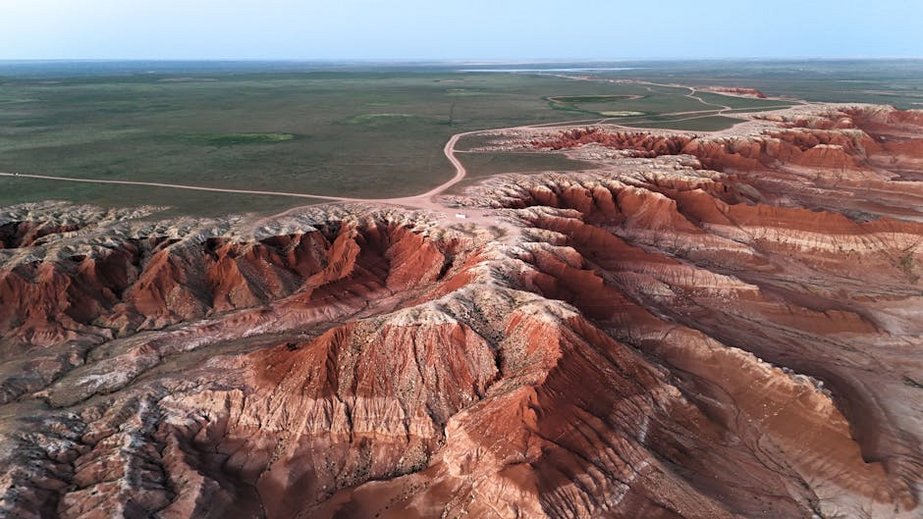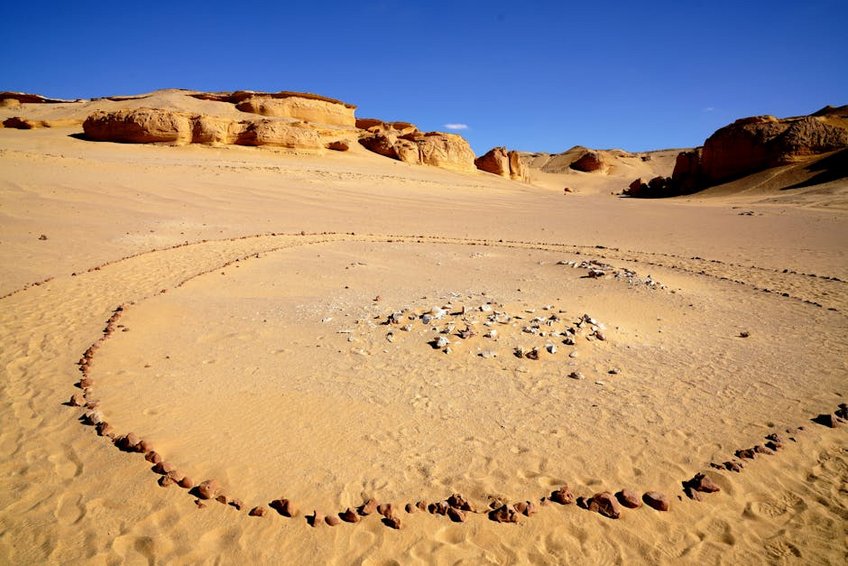Chad Ennedi Plateau Rock Formations – Your Ultimate Travel Guide
Exploring the Chad Ennedi Plateau rock formations feels like stepping into another world, where ancient sandstone sculptures rise dramatically from the Sahara Desert. This remote wilderness in northeastern Chad showcases nature’s artistry through towering arches, deep canyons, and prehistoric rock art that tells stories of civilizations past. As a UNESCO World Heritage site, the Ennedi Plateau offers unparalleled opportunities for adventure travelers seeking untouched landscapes and cultural immersion. You’ll discover why this destination captivates photographers, hikers, and history enthusiasts alike with its raw beauty and spiritual ambiance. The Chad Ennedi Plateau rock formations provide a unique blend of geological wonders and human history that makes every journey here unforgettable. From camel treks across golden dunes to discovering hidden waterholes, your experience will be filled with moments that redefine wilderness exploration. Prepare to be amazed by how these natural structures have weathered millennia, creating a playground for modern adventurers.
Chad Ennedi Plateau Rock Formations – Essential Information
Understanding the Chad Ennedi Plateau rock formations begins with recognizing their geological and cultural significance in one of Africa’s most spectacular regions. Located in the Sahara Desert, this plateau spans approximately 60,000 square kilometers and features sandstone formations shaped by wind and water erosion over millions of years. You’ll find yourself surrounded by natural arches, pinnacles, and cliffs that create a surreal landscape perfect for exploration. The area also hosts numerous archaeological sites with rock paintings and engravings dating back thousands of years, offering glimpses into ancient human activities. Visiting these formations requires careful planning due to the remote location and challenging environment, but the rewards include breathtaking vistas and a profound connection with nature. As you navigate this guide, you’ll learn everything from the plateau’s formation processes to practical tips for making your trip successful and memorable.
What Are the Ennedi Plateau Rock Formations? – Key Features
- The formations consist primarily of sandstone that has been sculpted into arches, bridges, and towers through natural erosion, with some structures reaching over 100 meters in height.
- You can explore diverse landscapes including gueltas (permanent water sources), canyons, and dunes that support unique ecosystems and wildlife like desert crocodiles and Barbary sheep.
- These rock formations are adorned with thousands of prehistoric rock art sites, depicting animals, human figures, and symbolic patterns that provide insight into Saharan cultures from 6000 BCE onwards.
- Budget travelers can expect to spend $1,500-$2,500 per person for a 7-10 day expedition, covering basic guided tours, shared camping, and local meals, but may need to compromise on comfort and private transport.
- Mid-range options cost $3,000-$5,000 and include better-equipped vehicles, experienced guides, improved accommodation like eco-lodges, and more inclusive meals, offering a balance of adventure and convenience.
- Luxury expeditions range from $6,000-$10,000+ and feature private guides, premium camping setups with showers, gourmet food, and customized itineraries, ideal for those seeking comfort in remote settings.
- UNESCO World Heritage Centre – Ennedi Massif: Natural and Cultural Landscape
- Lonely Planet – Chad Travel Guide and Tips
History and Geological Significance – Formation Process
The Chad Ennedi Plateau rock formations originated from sedimentary deposits laid down during the Paleozoic era, around 500 million years ago, when the region was covered by shallow seas. Over time, tectonic shifts and climatic changes exposed these layers to erosion, with wind and water carving the spectacular shapes you see today. This geological history makes the plateau a living museum where you can observe Earth’s dynamic processes in action. The area’s isolation has preserved its pristine condition, allowing scientists to study climate evolution and human adaptation in the Sahara. As you wander through the formations, you’ll notice distinct layers and colors that reveal different mineral compositions and historical periods, adding depth to your adventure.
UNESCO World Heritage Status – Global Recognition
Inscribed as a UNESCO World Heritage site in 2016, the Ennedi Massif gained international recognition for its outstanding natural beauty and cultural value, highlighting its importance as a protected area. This status helps promote conservation efforts and sustainable tourism, ensuring that future generations can enjoy these wonders. You’ll benefit from guided tours that emphasize preservation while providing access to key sites like the Arch of Aloba and the Guelta d’Archei. UNESCO’s involvement also supports local communities in managing tourism impacts, making your visit contribute positively to the region’s economy. Understanding this designation enhances your appreciation for the plateau’s global significance and the need to travel responsibly.
Planning Your Trip to Chad Ennedi Plateau
Organizing a journey to the Chad Ennedi Plateau rock formations involves thoughtful preparation to handle the remote desert environment and logistical challenges. You’ll need to consider factors like seasonal weather patterns, budget constraints, and physical fitness levels to ensure a safe and enjoyable experience. Most travelers access the plateau through guided expeditions from N’Djamena, Chad’s capital, which typically include 4×4 vehicles, camping gear, and local guides familiar with the terrain. Your planning should account for visa requirements, vaccinations, and travel insurance tailored to adventure destinations. By breaking down the process into manageable steps, you can create an itinerary that balances exploration with comfort, whether you’re a solo backpacker or part of a group. Remember that flexibility is key in this unpredictable landscape, so allow extra days for unexpected delays or spontaneous discoveries.
Best Time to Visit Ennedi Plateau – Seasonal Analysis
The ideal time to explore the Chad Ennedi Plateau rock formations is during the cooler months from November to February, when daytime temperatures range from 20-30°C (68-86°F) and nights are crisp. This period avoids the extreme heat of summer, which can exceed 40°C (104°F), making hiking and camping more comfortable. You’ll also benefit from clearer skies for photography and stargazing, though occasional sandstorms may occur. If you visit between March and May, you might encounter warmer weather but also witness the brief flowering of desert plants after rare rains. Avoid June to October due to scorching temperatures and potential flash floods in canyons. Planning around these seasons ensures you maximize your outdoor activities while minimizing health risks like dehydration or heatstroke.
Budget Planning and Costs – Financial Breakdown
Essential Preparation Checklist – Practical Steps
Before embarking on your Chad Ennedi Plateau adventure, compile a thorough checklist that addresses health, documentation, and gear. You should obtain a visa for Chad in advance, ensure your passport has at least six months validity, and get recommended vaccinations like yellow fever and typhoid. Pack lightweight, breathable clothing for daytime, warm layers for cold nights, sturdy hiking boots, a wide-brimmed hat, and high-SPF sunscreen. Don’t forget essentials like a reusable water bottle, first-aid kit, power bank for electronics, and cash in USD or euros for local expenses. It’s wise to learn basic French or Arabic phrases for communication and familiarize yourself with local customs to show respect. Lastly, arrange comprehensive travel insurance that covers medical evacuation, as remote areas have limited healthcare facilities.

Top Attractions and Activities at Ennedi Plateau
Discovering the Chad Ennedi Plateau rock formations means immersing yourself in a landscape filled with iconic sights and thrilling adventures that cater to various interests. You can spend days hiking through labyrinthine canyons, climbing natural arches, and swimming in hidden gueltas that offer refreshing oases in the desert. The plateau’s rock art sites, such as those at Niola Doa, provide fascinating glimpses into ancient civilizations through well-preserved paintings and engravings. Adventure seekers will love camel trekking across sand dunes or rock climbing on challenging formations, while photographers find endless inspiration in the play of light and shadow at sunrise and sunset. Each activity connects you deeply with the environment, whether you’re tracing the paths of nomadic tribes or simply soaking in the silence of vast, open spaces. With so much to see and do, you’ll want to prioritize based on your fitness level and time available.
Must-See Highlights – Unmissable Sights
Your visit to the Chad Ennedi Plateau rock formations should include the Arch of Aloba, one of the world’s largest natural arches spanning 250 meters, which offers breathtaking views and excellent photo opportunities. Another essential stop is the Guelta d’Archei, a permanent waterhole where you can observe rare desert crocodiles and witness traditional camel herds drinking—a scene that feels frozen in time. Don’t miss the towering pillars of the Cathedral and the intricate rock art at Archei, which features detailed depictions of giraffes, cattle, and human figures. These highlights represent the plateau’s diverse appeal, combining natural wonders with cultural heritage. You’ll find that each site has its own unique atmosphere, inviting you to linger and absorb the beauty and history surrounding you.
Hidden Gems and Local Favorites – Lesser-Known Spots
Venture beyond the main attractions to discover hidden gems like the secluded gueltas of Bachikele, where you can enjoy a peaceful swim away from crowds, or the remote canyon of Enneri Blaka, known for its stunning acoustics and birdlife. Local guides often recommend the less-visited rock art sites near Orida, which feature unusual symbols and patterns that puzzle archaeologists. You might also explore the sand seas on the plateau’s edges, where shifting dunes create ever-changing landscapes perfect for solitude and meditation. These spots provide a more intimate experience of the Chad Ennedi Plateau rock formations, allowing you to connect with the environment without distractions. Engaging with local communities can lead to invitations to traditional ceremonies or shared meals, enriching your journey with authentic cultural exchanges.
Photography and Adventure Opportunities – Capture the Magic
Photographing the Chad Ennedi Plateau rock formations requires timing and technique to capture their grandeur, so plan shoots during golden hour when soft light enhances textures and colors. Use a wide-angle lens for vast landscapes and a telephoto for wildlife shots, and protect your gear from sand with protective covers. For adventure, consider multi-day camel treks that follow ancient trade routes, or try rock climbing on certified routes with experienced guides. You can also join archaeological tours that focus on documenting rock art, combining physical activity with learning. These activities not only provide thrilling experiences but also deepen your appreciation for the plateau’s ecological and historical layers, making your trip both active and enlightening.
Practical Travel Information for Ennedi Plateau
Navigating the practical aspects of visiting the Chad Ennedi Plateau rock formations ensures a smooth and safe journey through this remote region. You’ll primarily rely on 4×4 vehicles for transportation, as roads are unpaved and often require expert driving skills, so booking with reputable tour operators is essential. Accommodation options range from basic camping under the stars to occasional eco-lodges that offer more comfort, though facilities are limited due to the isolated location. Safety considerations include staying hydrated, protecting against sun exposure, and following guide instructions to avoid getting lost in vast, unmarked areas. Currency-wise, carry USD or euros for payments, as credit cards are rarely accepted, and ATMs are nonexistent outside major cities. By understanding these logistics, you can focus on enjoying the stunning scenery and cultural encounters that make this destination so special.
| Category | Options/Features | Price Range (USD) |
|---|---|---|
| Accommodation | Basic camping with shared facilities, eco-lodges with private rooms | $30-$150 per night |
| Transportation | 4×4 rental with driver, domestic flights from N’Djamena to Fada | $100-$300 per day |
| Guided Tours | Group expeditions, private guides, specialized rock art or climbing tours | $200-$500 per day |


